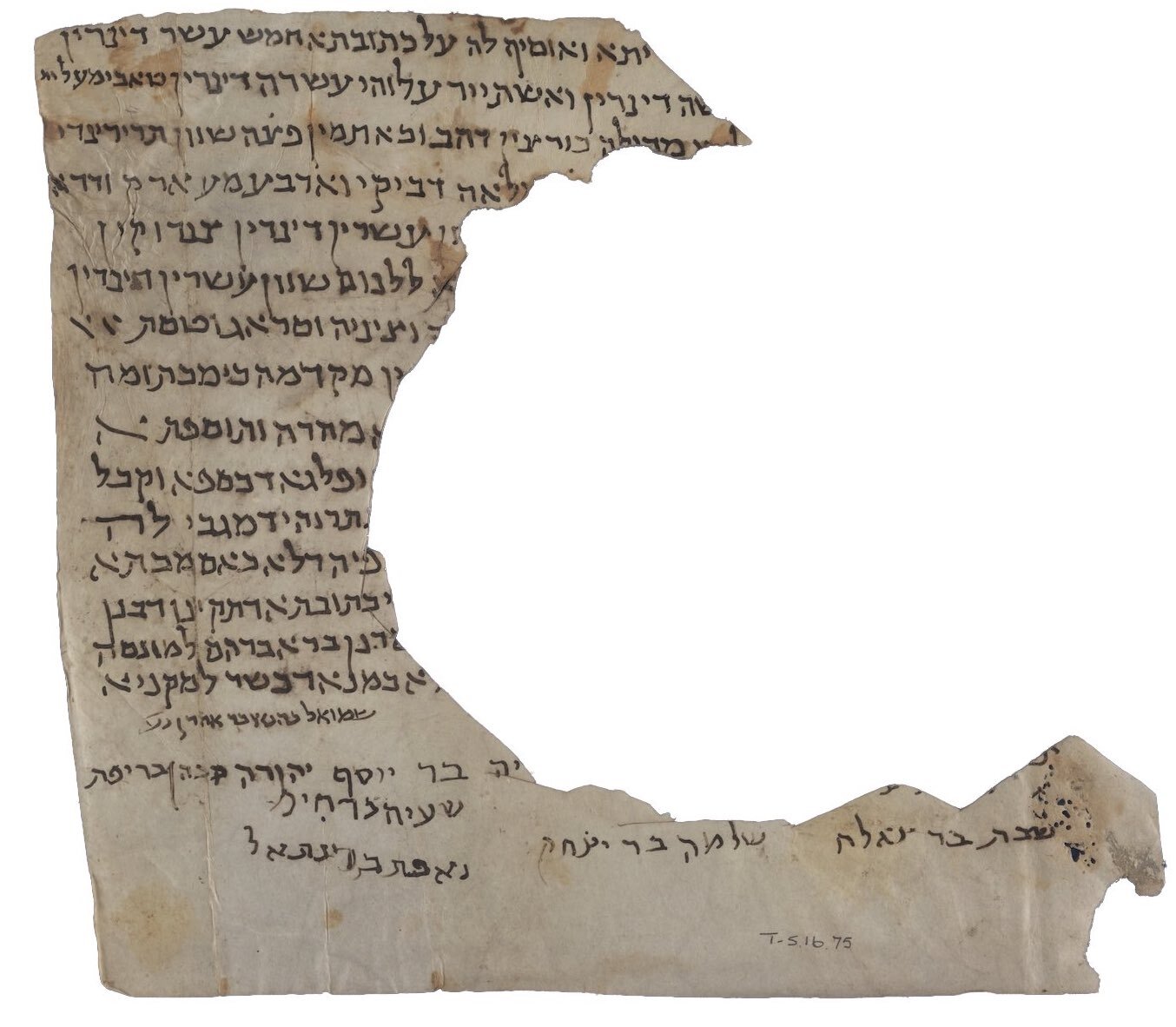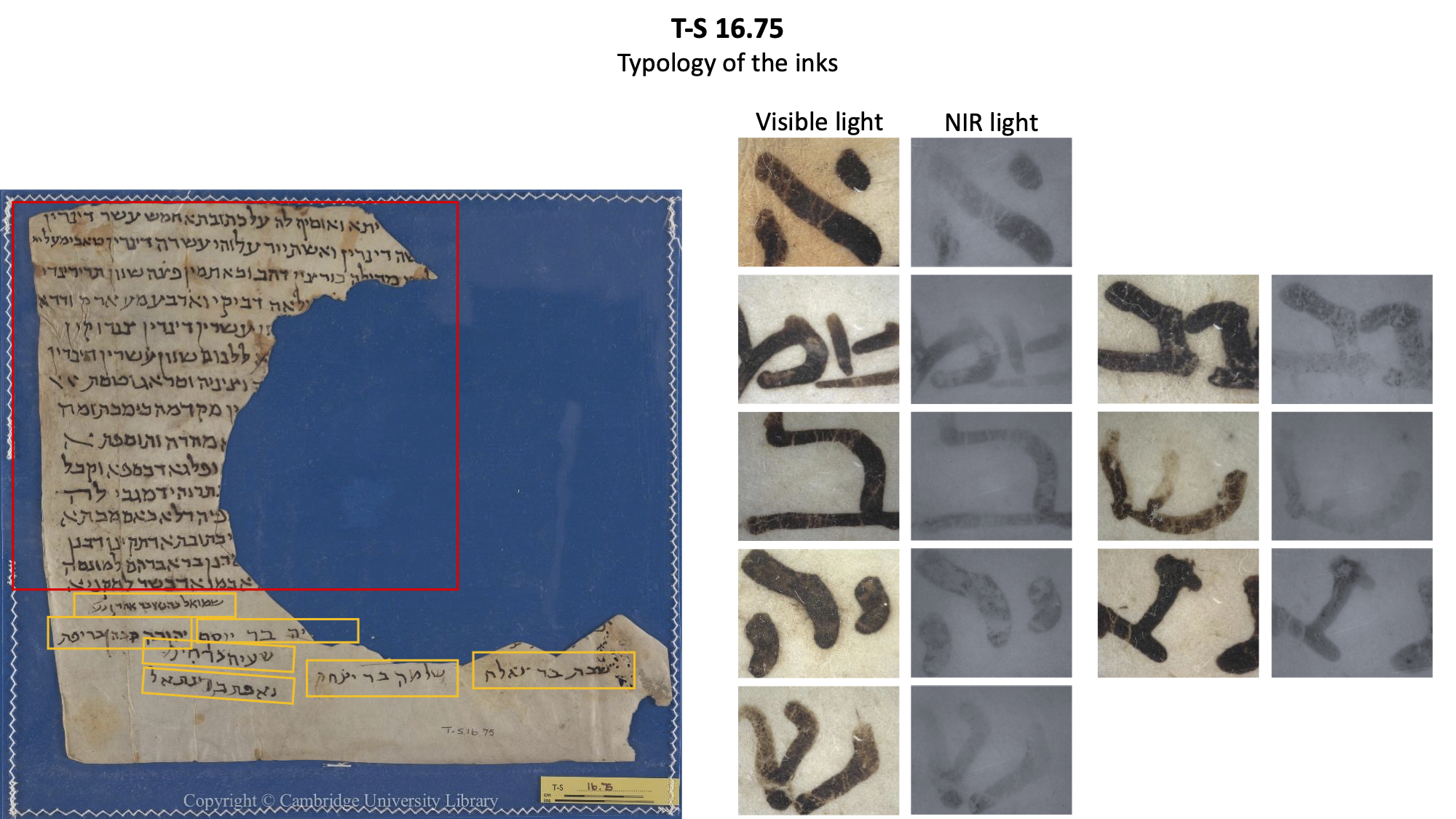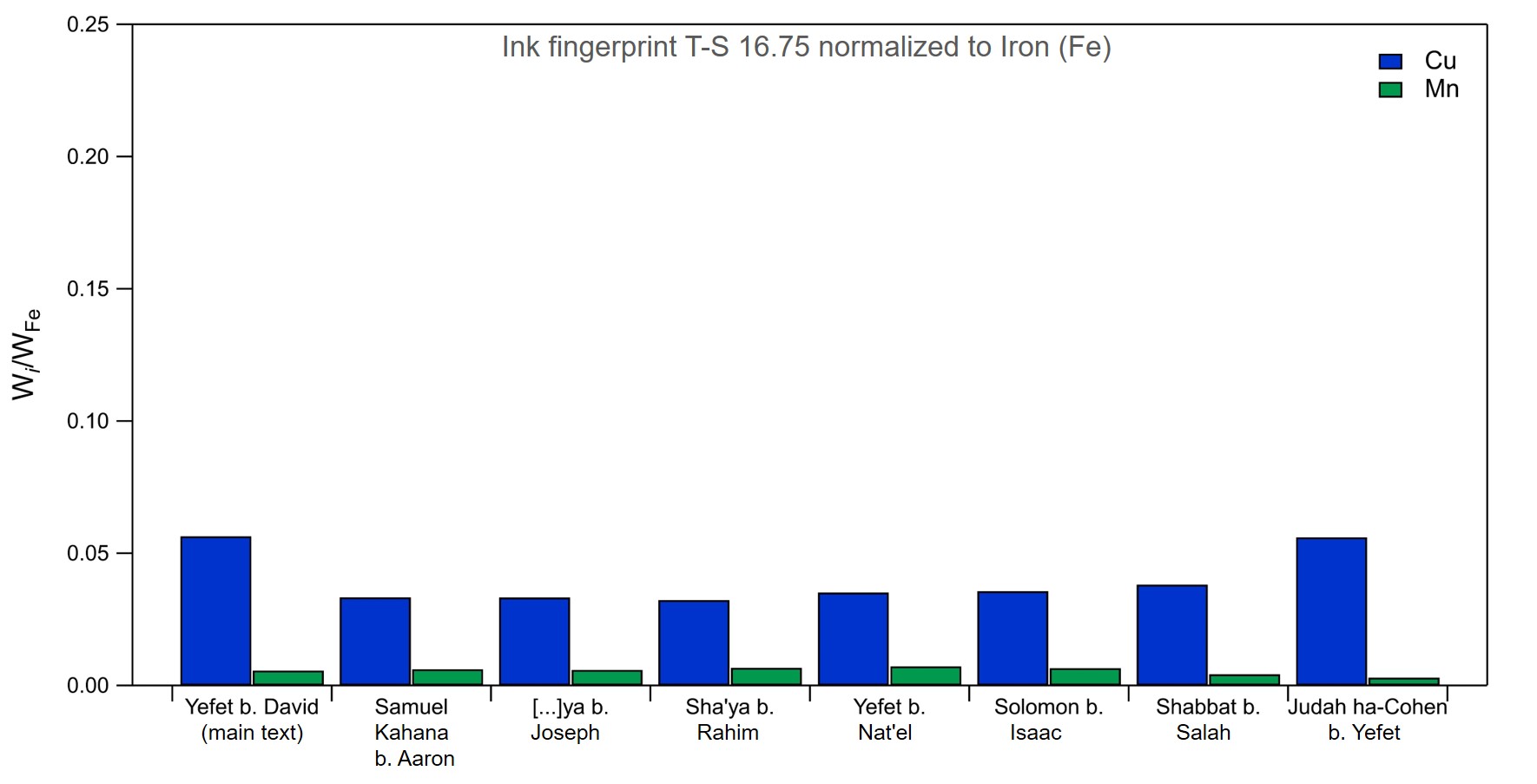Q&A Wednesday: Zina Cohen on the inks of Fustat

Zina, you have a new book coming out soon about inks in Genizah manuscripts. How did your interest in the fragments come about?
I have a Masters in archaeology, but have always been interested in science. I came to be interested in archaeometry – science applied to archaeology. During my Masters degree I worked on an Islamic complex in Morocco dating to the 14th century, analysing the mortar to try to understand if there were strategies involved in preparing the mortar. My main subject of interest, though, was manuscripts and pigments, and I planned to continue my studies and do a PhD looking at pigments in manuscript studies. There is a huge amount of information to be gleaned there – from trade and economy to the actual process of making the manuscript. I was introduced to the Genizah by Judith Olszowy-Schlanger and Ira Rabin, with whom I worked on my PhD and PhD project on the writing materials used in the Cambridge Cairo Genizah manuscripts.
Can you tell us about your new book, Composition Analysis of Writing Materials in Cairo Genizah Documents?
It will be published later this year, and is the published version of my PhD research. I focussed mostly on the first half of the eleventh century, working on certain scribes from the Palestinian and Babylonian communities. I tried to determine why scribes would use certain writing materials – was it connected to their community background? Location? Was it specific to the individual, or the time period? I mostly studied scribes based in Fustat but I also looked at some in other places, such as the Palestinian Gaon Solomon b. Judah, and Solomon b. Semah in Ramla. Through the study of a large corpus, I tried to understand what would motivate a scribe to use a writing material over and over again. I mostly studied inks but also looked at writing supports – paper, parchment or leather.
Where you able to bring together a diagnostic process for looking at Genizah manuscripts?
In short, no. In Fustat there were 4 different types of ink in use. Certain scribes had a preference for the ink they used, but they were not completely closed to the idea of using another type of ink – perhaps for reasons of cost or convenience. The scribe Yefet b. David, whom I studied extensively, was mostly inclined to use iron gall ink rather than carbon ink, but he still used carbon ink on occasion. Solomon b. Judah is the only person studied to use a single type of ink – iron gall – but his documents are all letters, so the genre of document may have led to a bias in the data. In Fustat, vitriol (iron sulphate used in the manufacture of ink) was readily available.
Can you tell us about the different types of ink used in Fustat?
There are 4 main types of ink, and all were used in Fustat: iron gall ink, carbon ink, plant-based ink, and mixed ink. Iron gall ink is the most common, found everywhere in the Middle Ages. It’s made using iron sulphate, gallic acid (usually from oak galls) and tannins. One way to obtain iron sulphate is by using vitriol (hydrated metallic sulphates). Vitriol also has other metallic impurities such as copper, zinc, manganese and lead. Different ratios of these metals provide a ‘signature’ or ‘fingerprint’ for the ink that allows us to compare different iron gall inks. We can’t compare different recipes used, but we can say that a particular ink has a different ratio of iron, zinc, manganese, etc. In Fustat we see that there are a lot of different types of vitriol in use. There are also iron gall inks prepared without vitriol, where the iron has been extracted from other sources, such as iron filings or rusty nails.
Carbon ink is usually made of soot. Mixed ink is made of a mixture of carbon and iron gall ink, or carbon ink and plant ink. Plant ink is made in a similar way to iron gall ink, but without iron added to the ink. However, at least in Fustat, I could see that the paper is iron-rich and the plant ink reacts with the iron that’s already in the paper. But plant inks are rare. They are rare in the Genizah corpus, and if we look at medieval ink recipes, such as those transmitted by Ibn Badis, there are very few recipes for plant inks (but many for iron gall and carbon inks, and mixed inks).
How do you examine and analyse the inks used in the manuscripts?
I looked at manuscripts using a Dino-Lite, a small USB microscope, which allows us through illumination of the ultraviolet, visible, and infrared parts of the spectrum, to differentiate ink properties. I also used ArtTAX, an XRF (x-ray florescence) spectrometer, which allows us to evaluate ratios of metallic impurities in the ink.
For example, T-S 16.75, a ketubba written on parchment, is dated to the first half of the 11th century. The manuscript was written by Yefet b. David and signed by at least 7 witnesses (the document is fragmentary, but it seems that there was originally at least one other witness). The Dino-Lite pictures show that the inks lose opacity under NIR light which is a characteristic of iron gall inks (see fig. 1 below).

Fig. 1: T-S 16.75 viewed using the Dino-Lite.
The next figure displays the average fingerprint of the inks that were used to write and sign the document. The ink composition is the same for all spots analysed: about 5% copper after normalisation to iron and some traces of manganese. The slight variation in the fingerprint remains within the 10% error allowed in the model used.

Fig. 2: Fingerprint of the ink used in T-S 16.75.
What does this tell us? The document was therefore most likely written in front of the witnesses and signed directly, in a one-shot moment. This was the most frequent result in my corpus for the ketubbot manuscripts.
From your research were you able to see any differences between Palestinian and Babylonian inks?
No. We can see certain inks used for sacred purposes such as in the writing of scrolls, but for general use while we see some scribal preferences, they are not exclusive. I also looked at some Arabic manuscripts for comparative purposes, and found that Jewish scribes were using the same types of inks as their Muslim neighbours.
Are there are differences between Middle Eastern and European inks of the same period?
Although I haven’t studied European inks very well yet (I am working now at the University of Hamburg on manuscripts produced in France, in Tours, during the Middle Age), I understand that in Europe iron gall inks were used almost exclusively, with carbon inks used just for drawings in some cases. In Fustat, by contrast, we see all the different types of ink used.
Were you able to look at any manuscripts that Maimonides wrote, and can you say anything about the kind of ink that he used?
I have a short chapter in my book about Maimonides – he’s an interesting figure because of course he gives precise directions for making ink for use in sacred writings. But in the manuscripts I examined, he did not follow or use his own recipe. I studied 5 of his documents, including T-S 10Ka4.1 (a draft of the Guide for the Perplexed), in which he uses two types of ink in the one manuscript – one carbon and one iron gall. It seems that for his documents he used any type of black ink that was available.
Did scribes make ink themselves?
I think some might make their own ink, but most purchase it, including Maimonides. Goitein mentions a couple of examples from letters in which ink is discussed. In T-S 13J10.5 a man writes, saying that the ink he purchased was no good, and requests that more ink samples be sent or he will have to make one himself (presented as a last resort – he clearly prefers to buy it). But at the same time, we do have a number of ink recipes preserved, suggesting that some scribes would make their own on occasion. It perhaps depended on convenience.
What other promising scientific studies remain to be carried out on the Genizah?
There’s so much more to be done. A study of all of Maimonides’ autograph manuscripts would be very interesting. Mass spectrometry would help us better understand the organic part of the inks and allow us to differentiate it more. Of course I am ink-focused, but there’s also more work to be done on paper production, and on the identification of the breed of the animals used for parchment.
Thanks for your time, Zina!
Zina Cohen is a postdoctoral researcher at the University of Hamburg.

Add new comment